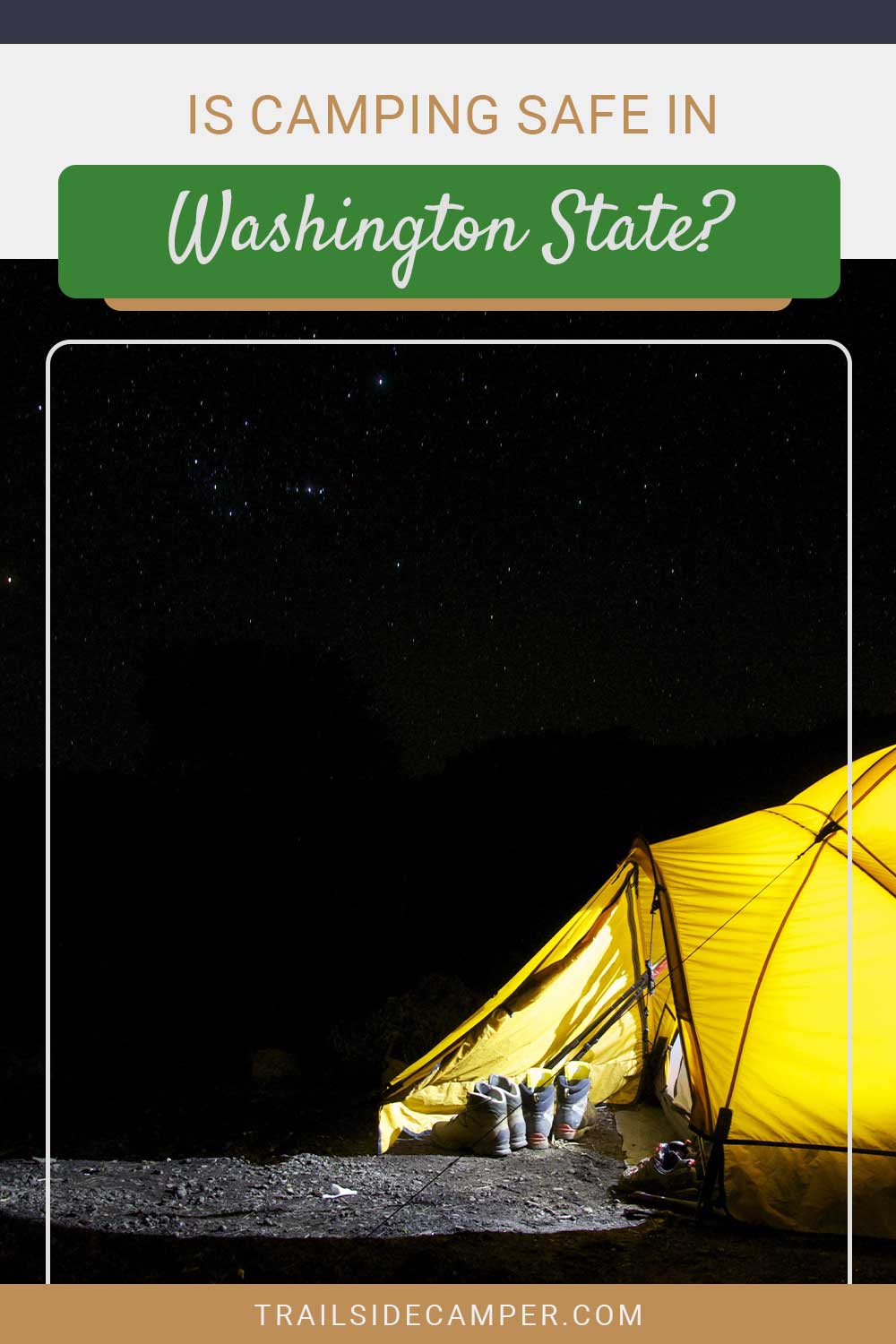Generally, yes. Washington State Parks and campgrounds are approved and monitored by the Park Rangers and the National Forest Service, which maintains and monitors U.S. Forest areas.
Private Campground and RV park owners are responsible for their safety and security procedures. Please check with the Campgrounds and RVs for additional safety information.
Also, boondocking on Bureau of Land Management or BLM land is oftentimes free. Many of these sites are dispersed in the backcountry, and safety would be the responsibility of the campers.
How Do You Stay Safe While Camping in Washington State?
State Parks and National Forests/Parks have rangers entrusted with visitors’ safety. Washington State Park rangers perform law enforcement tasks such as conducting investigations, educating visitors on park rules, and issuing citations.
They also perform surveillance throughout the parks. Certain park rangers are also required to carry a firearm as part of their duties to enforce the safety of their visitors.
National Parks and Forests also have Rangers that conduct many of the same duties, including patrolling campsites. Not only do they patrol campsites, but they can assist in performing emergency care.
They conduct search and rescue, CPR, and first aid. With all that being said, burglary and prowling is a majority of the crime conducted on Park and National land.
What are the Most Popular Camping Spots There?
The beautiful thing about Washington State is the vast difference in climate and environment, all within the same state. To the east, you have one of the largest temperate rainforests in the United States.
One of the continental United State’s most glaciated peaks, Mount Rainier, and the whole cascade mountain range.
You will find rolling golden hills dotted with pine groves in central Washington. In Eastern Washington, you’ll find a dry high desert landscape opposite the eastern part of the state. As you can see, the most popular camping spots can vary immensely.
Mount Rainier National Park is the home of Cougar Rock Campground, which is one of the closest campgrounds to Paradise. Interested in camping in our very own rainforest?
The Hoh Rainforest National Park offers unique camping opportunities where campers are nestled in the ferns and moss of the forest. In the high desert of Eastern Washington State, the Bowl and Pitcher Campground offers unparalleled riverside camping.
There truly is something for everyone.
For How Long Can You Camp There?
We now know of vast camping opportunities. Well, each opportunity has its time limits. Sadly, all good things must come to an end. If you wish to camp in state parks, you will have 212 different parks to choose from.
State Parks cap stays for ten days during the peak season from April to September. If you are interested in camping during the off-season, you are allowed to stay for a total of 20 days. In National Forests, you are afforded 16 days in one area.
However, after you reach your 16-day limit, you are allowed to move at least 5 miles from your previous site, and you can camp for another 16 days. Private RV campgrounds make their limits for how long you can stay.
Things You Need to Have With You
Water or some sort of water filtration system will be your best friend not only camping in Washington State but camping anywhere. You’ll want some form of shelter. RV camping is allowed at many parks and forest campsites.
However, tent camping can be just as fun. You’ll want food, obviously, especially if you are hiking out to your campsite.
Along with food, in many locations, you will need to bring either a bear canister or an odor-resistant lining for your food storage and a way to get those containers up a tree far from your campsite.
You’ll have to have some way to remove everything you bring into a campsite, including, in some instances, ways to remove human waste. Research “leave no trace” ethics. Some sort of protection is always good to have on you when camping.
Some parks do not allow certain types of self-defense tools, so check with those in charge at each location. Bug Spray, especially if you are camping in the rainforest or near a body of water. Anything else you decide to bring is up to you as the camper.
When is the Best Time of Year For Camping There?
As discussed earlier, the peak season for state parks and National Forests is roughly April to September. The only issue here might be the vast amount of other campers you’ll have to compete with for a campsite.
Along with competition with fellow campers, the climate will be a big factor in deciding when to camp in Washington State. July, August, and September are historically the most pleasant months in Washington State.
Western and Eastern Washington have vastly different climates. With Western Washington accounting for the most rainfall in the state, it may be in your best interest to camp outside of the rainy season.
However, Western Washington does have the most temperate climate all year long. Not too hot, not too cold. In Western Washington, you’ll want to go camping during spring and fall.
Summers can get very hot, and winters often bring snow. However, waking up in the Ellensburg Pass and walking out of your camper to a foot of fresh fluffy snow is quite a peaceful experience.
Final Thoughts on Is Camping Safe in Washington State
We’ve said it, and we’ll say it again, Washington State truly has camping experiences for everyone. Every season will offer a different camping adventure. The best and most efficient way to be safe while camping is to be prepared and do your research.
Make sure folks back home know where you are going and when you should be home, and share all your plans in between. Stay hydrated, be aware of your surroundings, know your limits, and most importantly, have fun!

